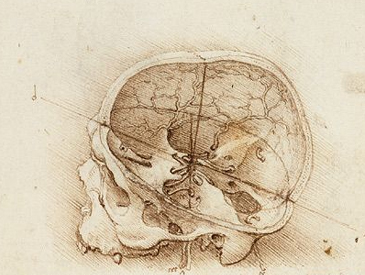'ASK MAESTRO Antonio how mortars are positioned on bastions day or night,' Leonardo da Vinci scribbled in one of his notebooks; 'ask Benedetto Portinari by what means they go on ice in Flanders; get the master of mathematics to show you how to square a triangle; find a master of hydraulics and get him to tell you how to repair, and the costs of repairing, a lock, canal, and mill in the Lombard manner.'
The most daunting aspect of Leonardo has always been his sheer range. 'Leonardo da Vinci: Artist, Scientist, Inventor,' at the Hayward Gallery, could never hope to be more than an exhibition devoted to frag-ments. Yet this particular assembly of Leonardo's bits and pieces - the majority of them drawings, notes, diagrams and other miscellaneous outpourings, drawn largely from the resources of the Royal Library at Windsor - attempts to restore a sense of wholeness to what has often seemed like a bewilderingly varied output.
The exhibition is, among other things, an illuminating corrective to the two pre-eminent cliches that have grown up around Leonardo, the twin simplifications that are responsible for the modern myth of him. The first has it that Leonardo was a great artist that might have been, his talents as a painter fatally compromised by his compulsive delvings into other, irrelevant areas - the Leonardo characterised by Henry Fuseli as an intellectual libertine, a Don Juan of the world of ideas, who 'wasted life, insatiate, in experiment.'
The second, more modern cliche casts Leonardo as a Man Of Our Time, born five centuries too early - the father, among other things, of modern aviation. It's no coincidence that Rome airport is called 'Leonardo da Vinci.'
Setting out to disabuse visitors of such preconceptions, the exhibition's most striking method is...

Drawing Analogies
31-01-1989

